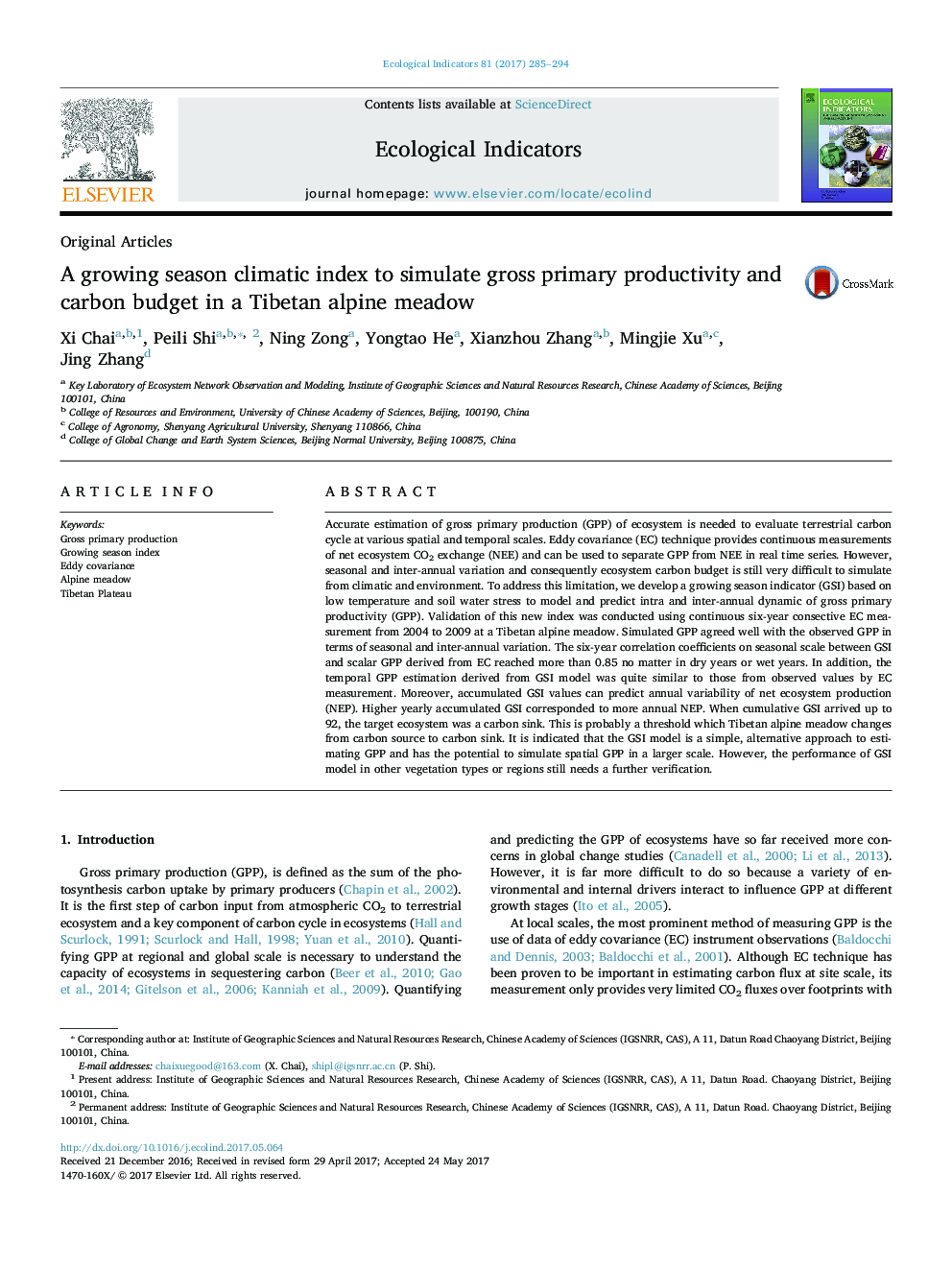| Article ID | Journal | Published Year | Pages | File Type |
|---|---|---|---|---|
| 5741433 | Ecological Indicators | 2017 | 10 Pages |
Abstract
Accurate estimation of gross primary production (GPP) of ecosystem is needed to evaluate terrestrial carbon cycle at various spatial and temporal scales. Eddy covariance (EC) technique provides continuous measurements of net ecosystem CO2 exchange (NEE) and can be used to separate GPP from NEE in real time series. However, seasonal and inter-annual variation and consequently ecosystem carbon budget is still very difficult to simulate from climatic and environment. To address this limitation, we develop a growing season indicator (GSI) based on low temperature and soil water stress to model and predict intra and inter-annual dynamic of gross primary productivity (GPP). Validation of this new index was conducted using continuous six-year consective EC measurement from 2004 to 2009 at a Tibetan alpine meadow. Simulated GPP agreed well with the observed GPP in terms of seasonal and inter-annual variation. The six-year correlation coefficients on seasonal scale between GSI and scalar GPP derived from EC reached more than 0.85 no matter in dry years or wet years. In addition, the temporal GPP estimation derived from GSI model was quite similar to those from observed values by EC measurement. Moreover, accumulated GSI values can predict annual variability of net ecosystem production (NEP). Higher yearly accumulated GSI corresponded to more annual NEP. When cumulative GSI arrived up to 92, the target ecosystem was a carbon sink. This is probably a threshold which Tibetan alpine meadow changes from carbon source to carbon sink. It is indicated that the GSI model is a simple, alternative approach to estimating GPP and has the potential to simulate spatial GPP in a larger scale. However, the performance of GSI model in other vegetation types or regions still needs a further verification.
Related Topics
Life Sciences
Agricultural and Biological Sciences
Ecology, Evolution, Behavior and Systematics
Authors
Xi Chai, Peili Shi, Ning Zong, Yongtao He, Xianzhou Zhang, Mingjie Xu, Jing Zhang,
